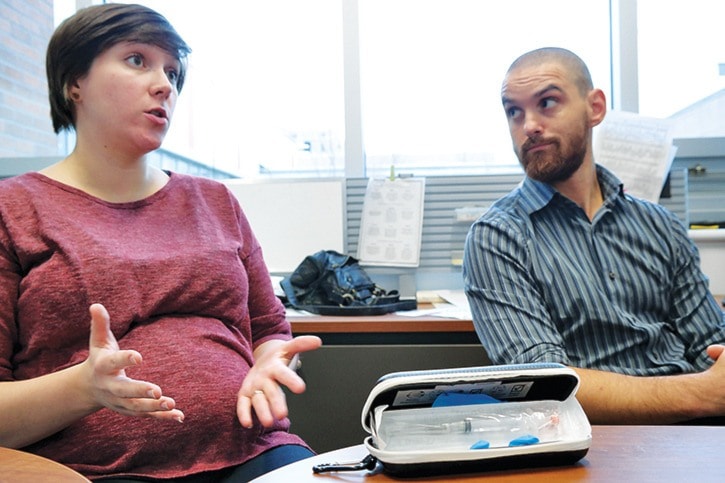Nanaimo’s hospital is the first on the Island to offer a take-home antidote for fentanyl.
Nanaimo Regional General Hospital’s emergency department began handing out two-syringe Naloxone kits last week to offer people a take-home antidote for opioid overdoses like fentanyl and heroin.
AIDS Vancouver Island in Nanaimo also offers the kit and Harris House plans to begin dispensing it in January, seeing it as a life-saving tool akin to EpiPen. The kits are paid for through the B.C. Centre for Disease Control and in part, a response to an increasing use of fentanyl in illicit drugs.
While no current statistics are available, a preliminary report from the B.C. Coroners Service shows fentanyl was detected in 91 of 257 illicit drug deaths in B.C. between January and Aug. 31, 2015, compared to 13 in 272 deaths in 2012.
More than half of the deaths where fentanyl was detected this year were in Nanaimo.
Fentanyl is getting mixed into every drug out there, including marijuana, said Dr. Trapper Edison, manager of the NRGH emergency department, who said before rolling out the program the department was testing people’s urine for fentanyl and found it could be present unbeknownst to patients.
The take-home kits, available to those seen at NRGH for opioid-related medical emergencies or those at-risk for an overdose, are meant to increase access, and put antidotes and community resource information into the hands of drug users.
It’s harmless medication, says Rebecca McGregor, registered nurse and program trainer at NRGH, but in the case of an overdose it “fully saves lives” and within moments.
An overdose depresses the respiratory centre of the brain and ceases circulation. Narcan binds to opiate receptors and allows people to breath again, she said, although McGregor still encourages people to call 911.
Since 2012, about 5,000 people have been trained across B.C. to use the kit and more than 325 overdoses have been reversed because of Narcan, according to Jane Buxton, head of harm reduction for the B.C. Centre for Disease Control, who says that number alone makes it clear the kit is needed.
To date, there are 115 locations across B.C. where people can access a kit. St. Paul’s Hospital in Vancouver, Royal Inland Hospital in Kamloops, and Nanaimo are the only emergency departments offering Naloxone kits.
Edison said in practical terms, the kits can save money. To admit an overdosing patient into the hospital costs approximately $18,000 a day. A person who had Narcan and then went to the hospital wouldn’t need to be admitted. But mostly it’s about the people and the needs of all walks of life, he said.
McGregor adds that this is a small community and that 60 per cent of overdose deaths are happening here is huge.
“These are people we see regularly,” she said. “If we can take advantage of a program and try to lessen that, why wouldn’t we?”
Medical health officer Dr. Paul Hasselback said it was a logical extension to provide antidote training to those affected. If it works well, he expects it to spread to other emergency departments.
